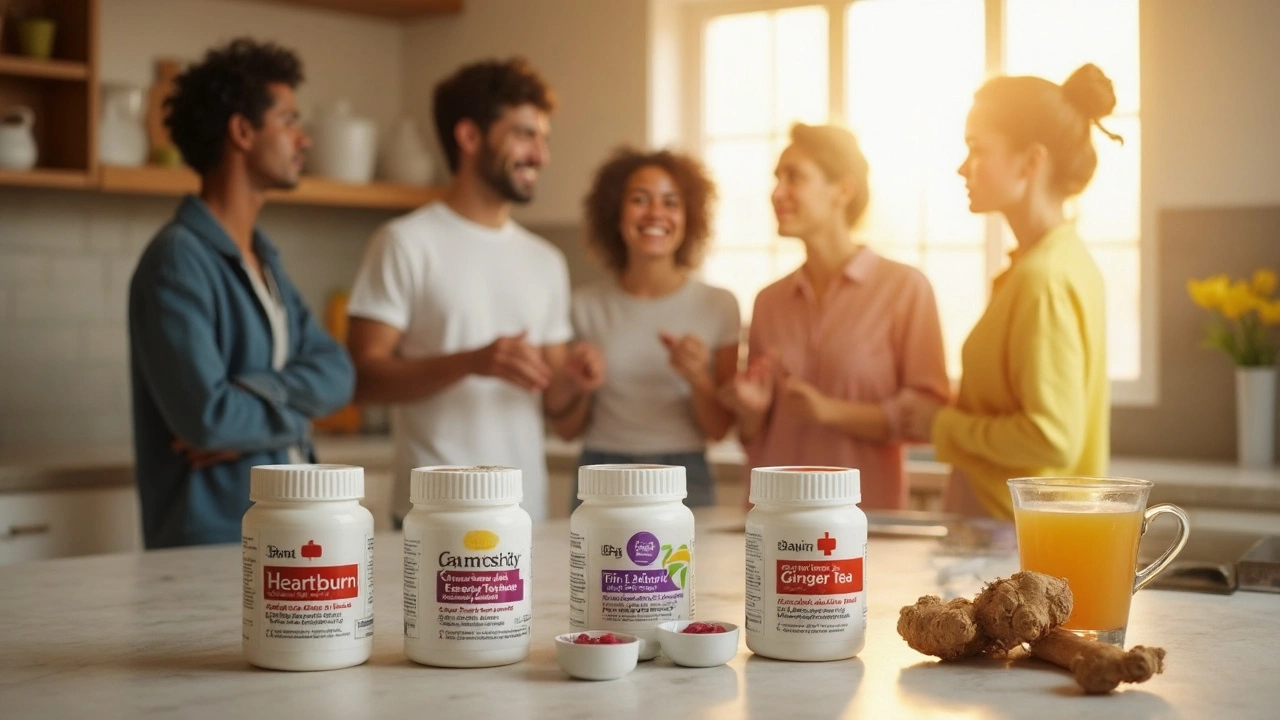Famotidine Alternatives: Find the Right Heartburn Relief
If you’ve been using famotidine for heartburn and it’s not cutting it, you’re not alone. Many people look for other options when they need faster relief, fewer side effects, or a lower price. Below you’ll get straight‑to‑the‑point info on why you might switch and which products actually work.
Why Look for Alternatives?
Famotidine is an H2 blocker, which means it reduces stomach acid but not as strongly as a proton pump inhibitor (PPI). Some folks still feel the burn after a dose, or they can’t tolerate the occasional headache it can cause. Others simply want an over‑the‑counter (OTC) choice that’s easy to pick up at any pharmacy. Whatever your reason, there are plenty of other medicines that target acid production in slightly different ways.
Top Alternatives to Consider
Zantac 360 (famotidine) – Although it’s the same drug, Zantac 360 is marketed as an OTC brand that many find cheaper and more readily available than prescription famotidine. It works the same way, so if the issue is price, this could be a quick fix.
Cimetidine (Tagamet) – Another H2 blocker that’s been around for decades. It’s slightly less potent than famotidine but often works well for mild to moderate heartburn. It’s also OTC in many countries, making it a convenient standby.
Nizatidine (Axid) – Similar to famotidine but not as widely stocked. If you can get it, it can be a good middle ground between cimetidine and famotidine in terms of strength.
Proton Pump Inhibitors (PPIs) – Drugs like omeprazole (Prilosec), lansoprazole (Prevacid), and esomeprazole (Nexium) block acid production more aggressively. They’re ideal if you have frequent heartburn or an ulcer. Most are OTC for short‑term use, but talk to your doctor for longer courses.
Antacids – Tums, Maalox, and Mylanta neutralize stomach acid instantly. They don’t prevent future reflux, but they’re perfect for occasional flare‑ups. Just watch the calcium or sodium content if you have kidney issues.
Lifestyle changes – Sometimes the best “alternative” is a tweak in your daily routine. Eating smaller meals, avoiding late‑night snacks, staying upright after meals, and limiting caffeine or alcohol can dramatically cut down symptoms.
When picking an alternative, think about how often you need relief, whether you prefer a quick fix or longer protection, and any other health conditions you have. If you’re unsure, a brief chat with a pharmacist can point you to the safest, most effective option.
Bottom line: there’s no one‑size‑fits‑all answer, but the market is full of reliable choices. Whether you go for another H2 blocker, step up to a PPI, or rely on antacids for occasional burns, you can find a solution that fits your budget and lifestyle without sacrificing comfort.
-
 VIEW POST
VIEW POSTFamotidine Alternatives in 2025: 8 Options That Go Beyond Heartburn Relief
Apr, 23 2025|12 CommentsSick of relying on Famotidine for heartburn or acid reflux? This guide breaks down eight newer or overlooked alternatives in 2025, showing how they work, when they’re useful, and what trade-offs to look out for. With so many people searching for better relief, understanding each option’s benefits and drawbacks saves money, time, and frustration. Get the info you’d want if you’re weighing your choices, and see how today’s alternatives compare side-by-side. Your stomach will thank you.